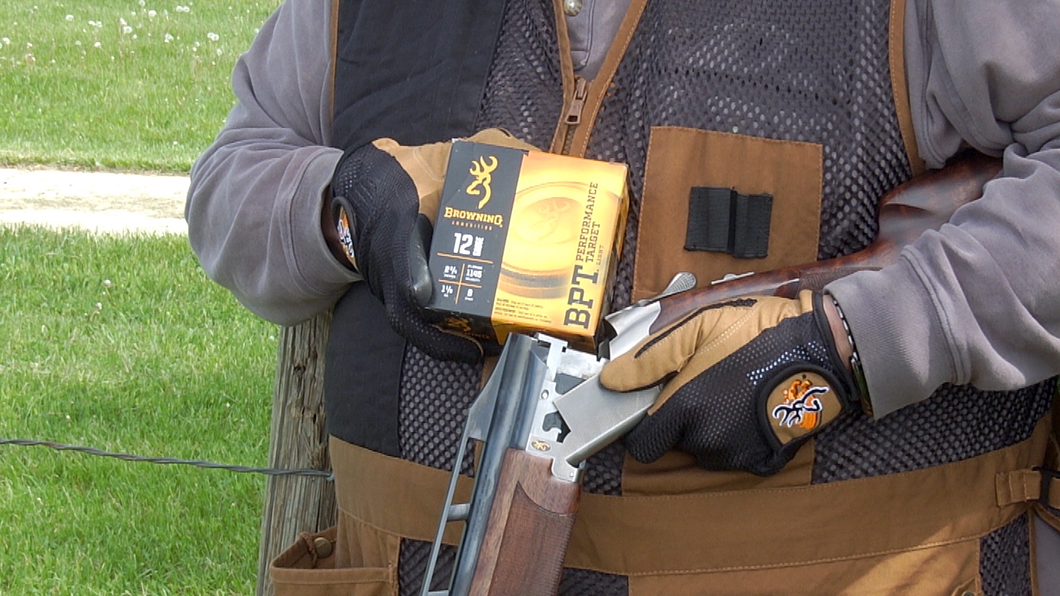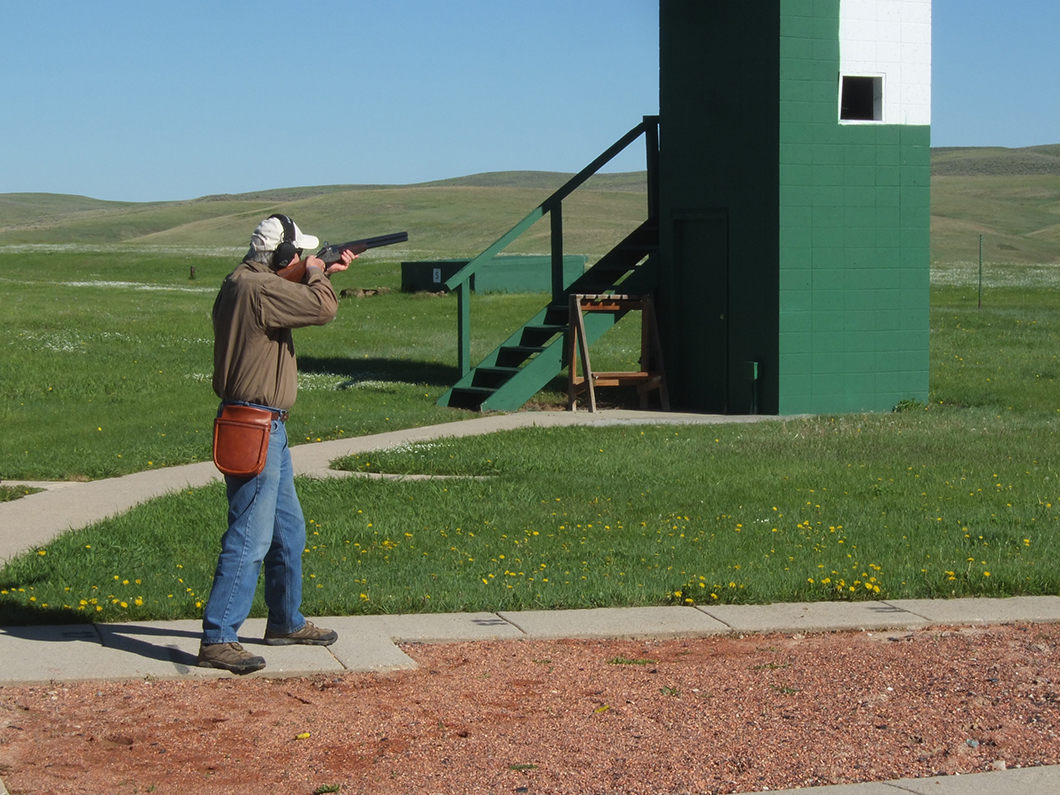Feats of Clay
I’ve known my friend Gary for, oh–never mind. (How did we get this old?) As long as I’ve known him he’s been an expert skier, captain of the college ski team, and still attacks the pistes, as they say. While his game has been skis and slopes, mine has been guns and fields, hunting and shooting ones. Gary was never anti-gun, just uninterested in, or perhaps ignorant of, it. I don’t think he appreciated the athletic skill involved in it, in the way he saw a challenge on the slopes.

Gary and I live a couple states apart, so we only get together around once a year, usually to harass some fish, that in general laugh at us behind our backs. A couple of years ago, when he came out here, we went over to do some long-range shooting at the invitation of an optics company. For Gary it was about the first time he had ever handled a rifle, let alone shot one. And of course, by the end of the day he was hitting the steel plate at a measured mile and winning the accuracy competition among all of us.

With his experience of the dynamic movement of skiing, I’ve always thought he’d be a natural for shotgun shooting. And I would love to get him out onto the clays ranges. But how do you introduce a non-shooter to trap and skeet–and maybe one day some bird shooting, too?
First, I don’t think that any child or adolescent getting into shooting should do so without going through a hunter-education course before hand. For one thing, if the shooter decides he, or she, wants to go on to hunting, he will be already qualified to get his hunting license.
Before that, though, ascertain that the novice has a genuine interest in learning to shoot. There’s that old horse-to-water thing. You need to make the idea appealing and not compulsory. Nothing will sour an introduction to shotgun shooting worse than brow beating and arm twisting. You need to extend an invitation, not issue an edict.

What about shooting itself? With Gary, after the session at the rifle range, I know he is not likely to be recoil sensitive. But it is always good to gauge what the level of tolerance may be for a person new to shotguns. The conventional approach is to ease a shooter into the sport by stepping down in gauge, to begin with. From a purely recoil standpoint, that makes sense. But keep in mind that 20- and 28-gauges qualify as “handicap” guns in trap and skeet because they make the game harder. So you are taking the least skilled of shooters and handing him a highly demanding shotgun. How do you spell “d-i-s-c-o-u-r-a-g-i-n-g”?
The frustration of missing is more likely to turn a shooter off on clay targets than getting punched in the shoulder, which in any case can be ameliorated with recoil pads on the gun and in the shooting vest, such as the ultra-thin Browning Reactar G2 pad, and proper mounting. And while no one should shoot without eye and hearing protection, keep in mind that a factor in the perception of recoil is the sound of the gunshot, which good “cans,” or other ear protectors, will dampen.
So a 12 gauge is the most forgiving gauge a new shooter can use when it comes to breaking targets, especially when choked to throw the largest pattern that is reasonable for the “discipline.” If you do think that a lighter gauge is still a good choice for breaking in a shooter, then why not the 16, like the Browning A5 “Sweet Sixteen”, its recoil-operated action also aiding in reducing recoil? And the so-called “square” 1-ounce load of the 16 is famed for very sweet, as it were, patterning.
Ideally, it would be best to start out a new shotgun shooter on some floaty targets; but that is not always possible. So diving right in may be the only way to go. Most shooters appreciate “new blood” being introduced to their sport, and so are more than tolerant about having a neophyte shooting with them–and if they are not, it’s time to change your shooting range to one where the other shooters are welcoming. Unfortunately, a new shooter is going to get a welter of advice, some contradictory, though some useful. If you can, try to be the clearing house of information for the shooter.
Be sure to shoot with the inductee; don’t abandon him to sink or swim on his own. Often, he can, if safe and permitted, stand behind you as you shoot first to get some idea of what’s going on. Conversely, you can stand behind him and see if you can adjust his shots. When all else fails, talk to your friend about an introductory lesson or two from a pro.
Boxers, briefs? Trap or skeet? Some may/will argue, but I think trap is the way to begin. It’s not any easier than skeet, in fact; but at least there are not crossing shots to contend with. If it is possible to slow down the trap thrower, all the better. Yet it takes only one intentionally, well-broken bird to draw someone into the sport.
Next time Gary and I get together, I have a Citori 725 Sporting and plenty of Browning target loads, to see if I can keep him from going downhill.
Follow Browning Ammunition’s social media channels for more hunting and shooting tips and updates on Browning Ammunition supported events and promotions on Facebook, You Tube, Instagram and Twitter.



